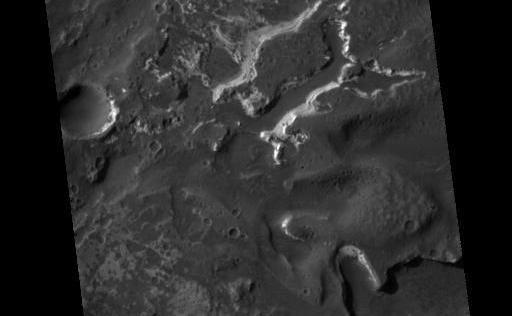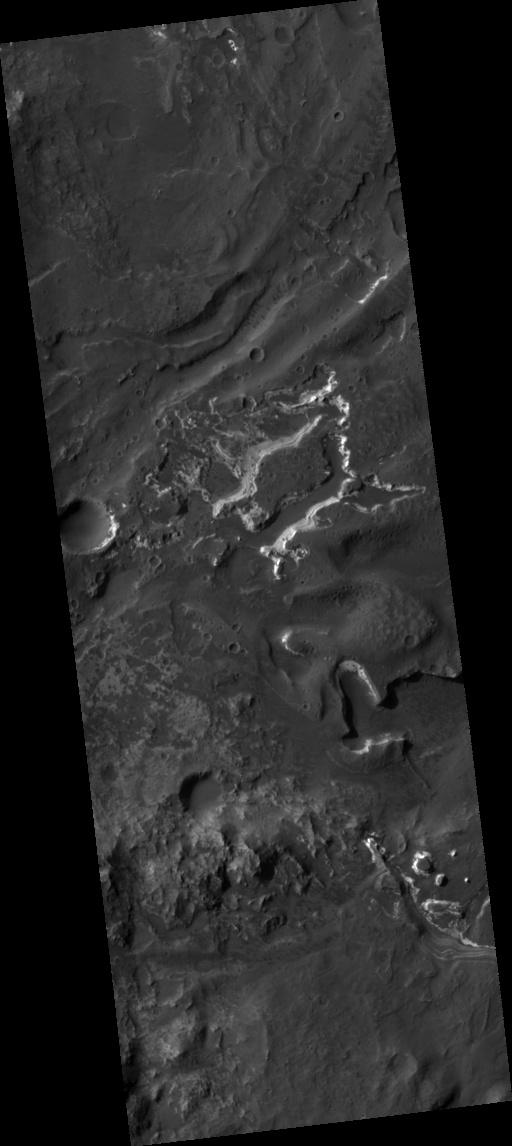Holden Crater Megabreccia: A Telltale Sign of a Sudden and Violent Event

| Credit | NASA/JPL-Caltech/Univ. of Arizona |
|---|---|
| Language |
|
This HiRISE image covers the southwest portion of the terraces and floor of Holden Crater situated in southwest Margaritifer Terra. The HiRISE sub-frame shows the most clearly-evident image of a megabreccia on Mars. Breccia is a rock typically consisting of rock fragments of various sizes and shapes that have been broken, tumbled and cemented together in sudden geologic event (e.g., a landslide, a flashflood or even an impact-cratering event). If it were not for the dark sandy dunes dispersed through out the sub-image, this image could easily fool an expert into thinking that this image is actually a photograph of a hand sample of an impact breccia. The prefix "mega" implies that the breccia in the sub-image consists of clasts, or rock fragments, that are typically larger than a large house or a building. The rectangular megaclast near the center of the image is a colossal 50 x 25 meters (~150 X 75 feet). As mentioned in the transition image caption for Holden crater (TRA_000861_1530), the crater likely experienced extensive modification by running water, which is supported by observations of drainage and deposition into the crater from a large channel (Uzboi Valles) breaching Holden's southwest rim. While it is possible that the megabreccia formed from a catastrophic release of water into the crater, a more likely possibility is that it formed from the impact that created the approx. 150 km-in-diameter Holden crater. Popigai Crater, a terrestrial crater of half the size of Holden, possesses a similar occurrence of megabreccia with a similar range in megaclast size to the Holden crater example. An impact-generated megabreccia deposit, as observed in terrestrial craters, typically lies beneath the crater floor, so the exhumation of the megabreccia may be the result of down-cutting and erosion of water that once flowed through Uzboi Valles.

